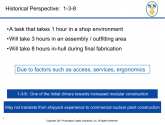I have a question for the more knowledgeable members here, as I am very much a layman on this subject. To what extent might the Type 095 be able to rival the Virginia/Suffren/Astute/Yasen classes of SSN's? Will the type 095 be able to rival (or surpass?) these models in terms of quietness, sonar, etc?
Let me take a stab at this. The PLAN nuclear submarine program is even more opaque than the rest of the PLA, and that's saying something. But I believe there's a helpful analogy to be drawn with the PLAN surface fleet. PLAN destroyers really came into their own with the introduction of the Type 052D class, the first ship of which (DDG
Kunming) was launched in 2012 - the Type 052D is a solid contemporary destroyer, if not really what you would call "world-leading". It inherited too many limitations from its small hull form and the baggage of its lineage, but it was nonetheless a worthy ship that incorporated a suite of advanced technologies, so the PLAN procured it in numbers.
The first world-leading Chinese warship was the clean sheet Type 055, which was launched five years after the first Type 052D. Its propulsion, weapons, sensors, electronic warfare suites, datalinking, command facilities, etc. give nothing to any competitor.
I think Chinese SSNs are somewhere in the Type 052D phase. The latest Type 09-IIIs (which with tongue firmly in cheek I'll call "Improved 09-III") correct many of the defects of the earlier iterations by using much more advanced technologies and production methods, but they remain held back by the inherent limitations of their design. I speculate that since the PLAN likes to eat risk in manageable chunks, we'll see a production run of these Improved 09-IIIs in the new Bohai yard for a few years before the first Type 09-V, to validate the new yard. The clean sheet 09-V is the Type 055 in this scenario - a first rate submarine that gives nothing to any competitor - and I think we're still some years away from the first one being built.
Incidentally, this pattern repeats itself frequently in the PLA's modernization. For instance, the first DF-31 ICBM was very limited - it was heavy (as in structurally heavy, not a desirable trait in a ballistic missile), it used mediocre propellant (HTPB), and was carted around on a Tonka toy truck. Then along came the DF-31A which greatly increased the range by lightening the structure and using an improved propellant (NEPE), and MIRVed the missile to 3 warheads. The DF-31AG solved the TEL issue by attaching the missile to a much more rugged, off-road truck. The DF-31AG is the "Type 052D" in this analogy. But it's limited by its form factor, it's just small for an ICBM.
Then along came the much larger and heavier (in fuel, i.e., the good kind of heavier) next-generation DF-41 (the Type 055 analogue), which increased the number of warheads from 3 to 6-10.

